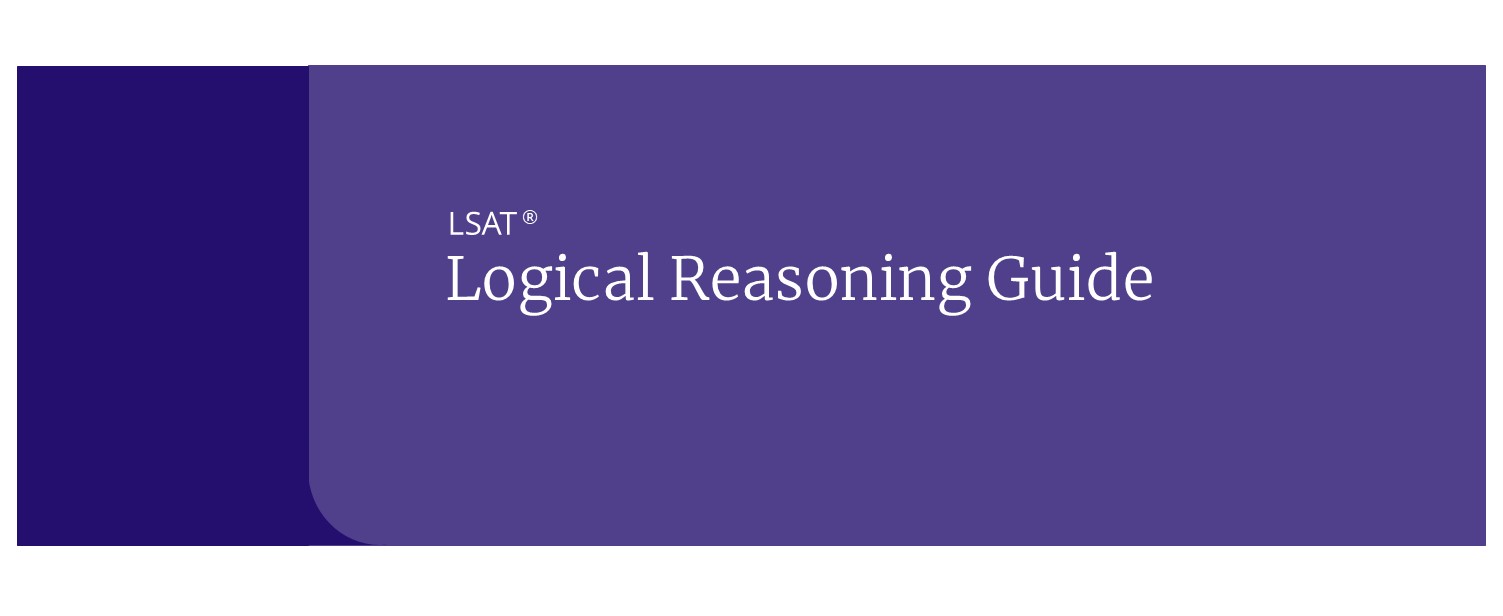Guide to LSAT Logical Reasoning
LSAT preparation is a tough process, and making the commitment is an impressive decision when you have a job or school or a million other things you could be doing. As far as the nerves are concerned, we are going to try and cut down on that anxiety in a couple of ways. Logical Reasoning makes up about two-thirds of the LSAT and can make or break your score if you’re not prepared.
[ RELATED: Top 4 Tips for Logical Reasoning on the Digital LSAT ]
The Kaplan Method for Logical Reasoning features 4 steps for each question.
LSAT Logical Reasoning Question Types and Strategies
While having a strategy for each question is important, so is having a general strategy for each section. What’s the best strategy for Logical Reasoning? Skip questions! You need to get all the way to the last question in the section before the 35 minutes is done, because you need to make sure that you get to all of the questions you can definitely get right– don’t miss something easy because you were getting in a battle with a question earlier in the section.
Now, let’s look at the question types you will encounter in the Logical Reasoning sections. Knowing what question types are your strengths and weaknesses will help you determine which questions to tackle and which questions to skip.
Assumption
Evidence + Assumption = Conclusion is the bread and butter of LR. Remember to use keywords as well as critical thinking to locate the conclusion FIRST. Then ask “why is the conclusion true?” and identify the evidence, ignoring any filler or background. The assumption is what’s missing, what the author takes for granted in drawing his/her conclusion from the stated evidence. Remember to differentiate between Sufficient and Necessary Assumption questions.
Strengthen/Weaken
Again, we break the stimulus into conclusion and evidence, then predict the assumption. To strengthen the argument, you must confirm the assumption in the correct answer choices– remember that you do not have to prove the conclusion is true, just make it more likely. For weakening questions, we deny the author’s assumption in the correct answer and make the conclusion less likely (again, we don’t have to disprove it). The biggest things to keep in mind are as follows: don’t go outside the scope of the argument, and do not call evidence into question. On the LSAT, evidence is accepted as truth.
Flaw
The final assumption family question type is flaw. All we are doing is finding the conclusion and evidence in the stimulus and drawing out the flawed assumption the author makes. The biggest difference between a flaw and an assumption question is that the flaws are usually described in general terms in the answer choices, so remember that if the answer choices get confusing, try to lay out the specifics of the argument against the general description in the answer choice; if something doesn’t fit, then it’s not the right answer. Memorize the common flaws you see in all assumption-based questions.
Inference
The biggest question type that doesn’t involve an argument-based stimulus. The biggest things to keep an eye on with inference questions include remembering the stimulus is not an argument with conclusion and evidence, so we need to inventory the information in order to find the answer. The answer to a standard inference question is something that MUST BE TRUE based on the stimulus information, so for each answer choice you should ask one question: does it have to be true? Refer back to the stimulus as often as needed, and look out for formal logic.
Principle
Principle questions can go one of three ways: most commonly, identify the principle, which means that we get a specific argument in the stimulus and a general principle in the answer choice. We break down the specific argument (conclusion/evidence/assumption) and then look for a general version of the assumption in the answer choices. In the second sub-group, applying the principle, we see a general principle in the stimulus and specific situations in the answers. Pay specific attention to the question stem, since it can ask for a situation that follows OR violates the principle.
Finally, we have parallel principle questions.
These LSAT questions are pretty rare, and they incorporate both of the above activities; we get a specific argument in the stimulus and specific arguments in the answer choices. We need to find the argument in the answer choices that follow the same general principle as the stimulus. On any principle question, first identify where the principle is: answer choice, stimulus, or only pulled from an argument.
The smaller question types are not, taken individually, as important to your score as the heavy hitters mentioned above, but together they still pack a punch. Make sure you are familiar with them and know what to do with each when you encounter them. A great resource to get good at this is through timed section work.





